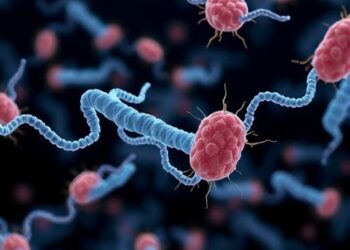Gastroesophageal reflux disease (GERD) has traditionally been understood as a chronic gastrointestinal disorder caused by the retrograde reflux of gastric contents into the esophagus. This reflux can result in clinically significant symptoms and may progress to complications such as erosive esophagitis, eosinophilic esophagitis (EoE), Barrett’s esophagus (BE), and esophageal adenocarcinoma. Despite its widespread prevalence, the pathogenesis of GERD remains multifactorial and complex, influenced by both harmful and protective factors.
Background and Prevalence
GERD is among the most prevalent gastrointestinal diseases globally, with estimates ranging from 18.1% to 27.8% in the United States. This high prevalence translates into substantial direct and indirect economic costs.1–3 The traditional understanding of GERD centered on direct esophageal mucosal damage caused by refluxed acid and/or duodenal bile salts. However, emerging evidence suggests that alterations in the esophageal microbiome may play a pivotal role in the pathogenesis of GERD.
The Microbiome and GERD
The microbiome, a collection of microorganisms primarily comprising bacteria, fungi, archaea, and viruses, resides in various environments within the human body, including the skin, mouth, respiratory tract, and gastrointestinal tract. The microbiome plays a crucial role in regulating the immune system, nutrient synthesis, and protection against pathogens.9,10 Dysbiosis, or imbalance in the microbiota, can lead to tissue damage and contribute to inflammatory, autoimmune, metabolic, and neoplastic diseases.9,11–13
Recent studies have highlighted the potential role of the esophageal microbiome in GERD pathogenesis. Microbial dysbiosis in the esophagus can induce an immune response that triggers inflammation and subsequent esophageal damage. This paradigm shift in understanding GERD’s etiology has led to the exploration of novel treatment strategies targeting the esophageal microbiome.
Cytokine Expression in GERD
While direct acid contact and disruption of the esophageal mucosal barrier were previously thought to be the primary mechanisms of GERD-related damage, there is increasing evidence that cytokine-mediated pathophysiology plays a significant role. Lipopolysaccharide (LPS), a cell wall constituent of gram-negative bacteria, binds to toll-like receptor 4 (TLR-4) on human cells, triggering an inflammatory cascade. This cascade results in the production of pro-inflammatory cytokines such as interleukin (IL)-18, IL-1, IL-6, IL-8, and tumor necrosis factor-alpha (TNF-α).
A seminal study demonstrated that reflux esophagitis does not develop solely as a chemical injury at the epithelial surface but involves a submucosal inflammatory cascade initiated by T-lymphocyte infiltration.25 Further studies support this finding, with increased expression of HIF-2α, phosphorylated NF-κB subunit p65, and mRNA levels of pro-inflammatory cytokines in esophageal biopsies from patients with GERD.26,27
The Role of Cytokines and Microbiome in Motility
The esophageal microbiome also influences gut motility, potentially contributing to GERD pathogenesis. LPS–TLR4 activation leads to the expression of inducible nitric oxide synthase and cyclooxygenase-2 (COX-2), resulting in inflammation and decreased esophageal motility. Nitric oxide, for example, relaxes the lower esophageal sphincter and decreases esophageal motility,31 while COX-2 expression delays gastric emptying.32
Inhibitors of these enzymes have shown therapeutic potential by reversing their effects, suggesting a cytokine-mediated pathophysiology in GERD. Additionally, short-chain fatty acids (SCFAs) produced by colonic bacteria fermentation can decrease gastric motility and may contribute to acid reflux.35,36
Microbiome-Directed Treatment Strategies
Traditional GERD treatments focus on acid suppression using proton pump inhibitors (PPIs). However, emerging evidence suggests that PPIs may also exhibit an anti-inflammatory effect, further supporting the role of cytokines in GERD pathophysiology.31 Newer treatment strategies, including probiotics, prebiotics, and fecal microbiota transplantation (FMT), aim to restore microbial balance in the esophagus and mitigate inflammatory cascades.
Conclusions
In conclusion, the esophageal microbiome and cytokine expression play crucial roles in the pathogenesis of GERD. Advances in understanding these mechanisms have led to the exploration of novel treatment strategies that target the microbiome and inflammatory pathways. Future research is necessary to fully elucidate the complex interactions between the esophageal microbiome, cytokines, and human physiology, ultimately leading to more personalized and effective management of GERD.
Full text
The study was recently published in the Journal of Translational Gastroenterology.
Journal of Translational Gastroenterology (JTG) dedicates to improving clinical diagnosis and treatment, advancing understanding of the molecular mechanisms, and promoting translation from bench to bedside of gastrointestinal, hepatobiliary, and pancreatic diseases. The aim of JTG is to provide a forum for the exchange of ideas and concepts on basic, translational, and clinical aspects of gastroenterology, and promote cross-disciplinary research and collaboration.
Follow us on X: @xiahepublishing
Follow us on LinkedIn: Xia & He Publishing Inc.




